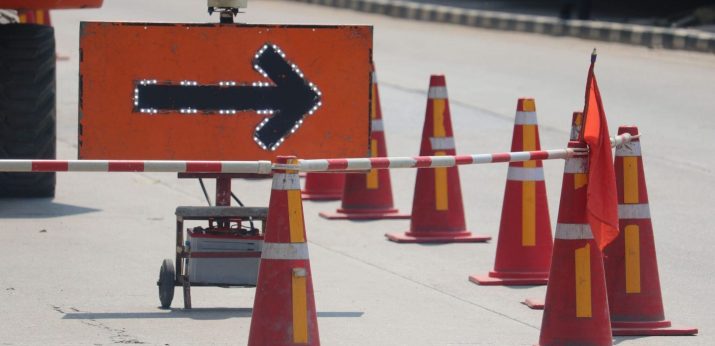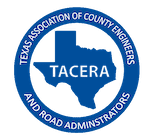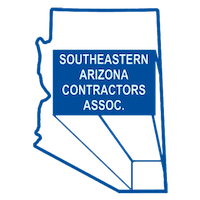In the bustling world of construction, ensuring the safety of both workers and the general public is paramount. One of the most critical components in achieving this is the use of traffic markers. These markers, often overlooked by the average passerby, play a pivotal role in directing traffic, preventing accidents, and ensuring a smooth flow of vehicles and pedestrians around construction zones.
Reflective traffic markers, a subset of these markers, significantly enhance visibility, especially during nighttime or in low-light conditions. Their reflective properties catch the headlights of vehicles, alerting drivers to changes in the road ahead. Pavement markers, another essential tool, are embedded into the road surface, providing a tactile and visual cue to drivers. These markers are especially crucial in areas where the road might be worn out or in parking lots to indicate spaces and directions. Road reflectors, often seen on highways, provide an added layer of visibility, reflecting light back to its source, ensuring drivers stay on course. Furthermore, road markers, which come in various shapes and sizes, serve as a guide, especially in areas where the road layout might be complex or changing due to ongoing construction.
By integrating these various markers and reflectors, construction zones can ensure maximum safety and guidance for all road users.
The Different Types of Traffic Markers
Traffic Markers: The Backbone of Road Safety
More than just tools; they are the backbone of road safety in construction zones. They provide clear guidance and warnings to drivers, helping to reduce confusion and potential hazards. With over 10 types of traffic markers available, they cater to various applications, ensuring that every construction zone is well-equipped.
Raised Pavement Markers: Enhancing Visibility on the Road
Raised pavement markers, often made of durable plastic, are designed to stand out on the road, especially during the night. These markers are typically yellow or white and are placed on the road to guide traffic, especially in lanes where visibility might be compromised.
Reflective Traffic Markers: Ensuring Safety Even in Low Light
Reflective traffic markers also known as reflective road markers are essential for ensuring visibility during low light conditions. These markers, often found in colors like amber and orange, reflect light, making them easily visible to drivers and pedestrians alike. They are especially crucial in roadway construction zones where lighting might be inadequate.
Why Traffic Markers are Essential
- Visibility in Adverse Conditions: Whether it’s fog, rain, or the low light of dawn or dusk, traffic markers, especially reflective traffic markers, enhance the visibility of construction zones, ensuring that drivers can navigate safely.
- Direction and Guidance: In areas where regular traffic patterns are disrupted due to construction, these markers provide essential guidance, ensuring drivers know where to go and what to avoid.
- Reducing Speed: In construction zones, reduced speed is often necessary to ensure the safety of workers and prevent accidents. Traffic markers, especially when combined with traffic warning signs, signal to drivers that they need to slow down.
- Demarcation of Safe Zones: Construction often involves deep excavations, heavy machinery movement, and other hazards. Traffic markers delineate safe zones, ensuring vehicles and pedestrians stay clear of danger.
FAQs on Traffic Marking in Construction Zones
What are the primary functions of traffic markers in construction zones?
Markers primarily guide and direct traffic, ensuring smooth flow and safety in construction zones. They also enhance visibility, especially in adverse conditions, and demarcate safe zones.
How do traffic control supplies enhance safety in construction areas?
Traffic control supplies, including markers and delineators, provide clear guidance to drivers and pedestrians, reducing confusion and potential hazards.
Why are traffic warning signs crucial in construction zones?
They alert drivers to changes in regular traffic patterns, potential hazards, and reduced speed zones, ensuring they navigate the area safely.
How do traffic cones differ from other traffic safety supplies?
Traffic cones are portable and versatile, primarily used for short-term traffic control or to guide traffic around a hazard. In contrast, other traffic safety supplies, like barriers or signs, might be more permanent or convey specific instructions.
What should one consider when choosing a traffic paint supplier?
Factors to consider include the quality and durability of the paint, its visibility in various conditions, and the supplier’s reputation and reliability.
The Future of Traffic Safety in Construction Zones
With advancements in technology, we can expect even more innovative solutions in traffic marking. From smart markers that can communicate with vehicles to eco-friendly paints that reduce environmental impact, the future is promising.
However, the core principle remains the same: ensuring safety. As construction projects continue to grow in scale and complexity, the role of traffic markers and other safety supplies will only become more crucial.
Traffic markers are more than just road decorations; they are essential tools in ensuring safety in construction zones. Whether you’re a construction manager, a city planner, or just a concerned citizen, understanding their importance can make all the difference.
Learn more about our comprehensive range of traffic control supplies and ensure the utmost safety in your construction zones. Shop Now.













